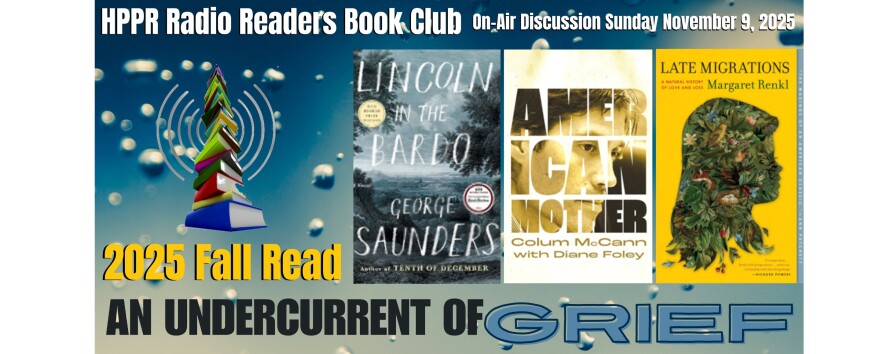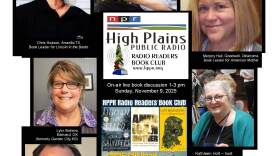Was it True, Fiction, or Intrusion?
by Jenny Inzerillo
Well, that was a first. I just finished reading a notorious classic that was signed and handed to me by someone that’s featured within its pages. (Seriously.)
This is Jenny Inzerillo for the HPPR Radio Readers Book Club, sharing my submission for the Summer Reading List. Upon its release, what I just read was referred to by Garden City area residents simply as “The Book” – and that wasn’t a moniker given in reverence. As many of you have surely guessed by now, I’m talking about Truman Capote’s 1965 “nonfiction novel,” In Cold Blood: A True Account of a Multiple Murder and Its Consequences.
At the time of its release, this book was said to be a breakthrough in form, transforming how the world thinks about both journalism and novels. Today, it’s frequently cited as the ignition of our country’s obsession with true crime that has exploded since its release. But to many who have lived through the events “The Book” describes, in the communities being examined, In Cold Blood was hardly a groundbreaking masterpiece.
To them, it remains an inexcusable intrusion by outsiders looking to exploit a deeply traumatic tragedy for financial gain, and one riddled with inaccuracies and embellishments at that. Furthermore, the “not-a-fan” set – which includes the family of the deceased -- felt that Capote’s account was cruelly dismissive and one-dimensional when it came to how their loved ones were portrayed, while extending profound sympathy toward the two men who made them that way.
Okay, I realize I’m taking for granted that most of our listeners are somewhat familiar with this book. But if you’re not, here are the basics: In Cold Blood is the story of a ruthless quadruple homicide of a beloved family living on their farm in Holcomb, Kansas in November 1959. And this wasn’t just any family. These were deeply connected people in the communities of southwest Kansas.
The patriarch, Herb Clutter: born in Gray County, Kansas; graduated from what we now call K-State; married his sweetheart, Bonnie Mae (Fox) Clutter; moved to Garden City and then Holcomb, where he started River Valley Farm. Herb was the founder and president of the Kansas Association of Wheat Growers, led the Garden City Equity Exchange, directed the Consumer's Cooperative, and was even appointed by Eisenhower to the Federal Farm Credit Board in 1954. And he was only 48 at the time of his passing.
His wife, Bonnie, studied nursing in college, raised up four kids, supported the family business, volunteered in her community, and managed a busy household despite health issues. She was 50 when she died.
Two of their four kids were still living in the house at the time of the home invasion: the teenagers, Kenyon Neal Clutter, and his sister, Nancy Mae Clutter. Both were in high school and --- by all accounts – seemed to be all-around overachievers like the rest of the Clutter clan. They were described by friends and family as smart, kind, ambitious, generous with their time, and highly involved at church and countless other community activities. Kenyon was 15 when he was killed; Nancy was a year older.
Upon his arrival in Finney County, just weeks after the killings, renowned author Truman Capote stated that he hoped to write about how the town was being affected by the tragedy. He brought along his childhood friend, Nelle Harper Lee, to assist him with research, interviews, and offer a softer landing than he might otherwise have had in a small rural community in 1959. (Real talk: he was petite, flamingly gay, and sounded a bit like Elmer Fudd if he sucked on a helium tank – not exactly “normcore” among a fairly-conservative, deeply-Christian populace in the mid-20th Century.) The research was comprehensive, and Capote dove deep with both investigators and (spoiler alert) the killers upon their capture. The book took years to complete, but it was a seismic success upon its release – which also marked the author’s slow descent toward alienation and addiction.
And as for how I got the book. Shout out to Jim and Barbara Whitton for hosting an evening with criminal psychologist Mitch Jones – the very man who, in early 1960, traveled from Larned, Kansas to Garden City to interview and examine the two accused killers, later testifying in their trial. Thanks to Mitch for sharing his time and handing me the softcover that has been my Summer read.
But regardless of its flaws, I found In Cold Blood to be a beautifully-written interpretation that prominently features the hometown of this station and the fascinating people who inhabit it – some of whom were lovely folks that lost their lives senselessly, but they’ll never be forgotten. So, let’s raise a coffee mug to the Clutters!
For HPPR Radio Readers Book Club’s Summer Reading List, this has been Jenny Inzerillo.
FOOTNOTE & REFERENCES
Fun fact! Clifford Hope, the father of HPPR’s founder, also has a connection to this book as well; he’s even thanked by the author in the acknowledgements. I encourage everyone to read an excellent piece about this connection, penned by Rosemary Hope, that appears in the New Territory magazine.
While I do hope (pun intended) that you check out this book, do further research on the problematic nature of its designation as wholly “nonfiction.” There are films1, documentaries2, and articles3 that’ll break it down.
____________________________________
1 In Cold Blood (1967) – Directed by Richard Brooks; Capote (2005) – Directed by Bennett Miller; Infamous (2006) – Directed by Douglas McGrath
2 Cold Blooded: The Clutter Family Murders (2017); Holcomb: The Death of Innocence (1993)
3Article: Capote’s Long Ride by George Plimpton, The New Yorker, 1997; Fact Checking “In Cold Blood” by Ben Yagoda, Slate.com, 2013










